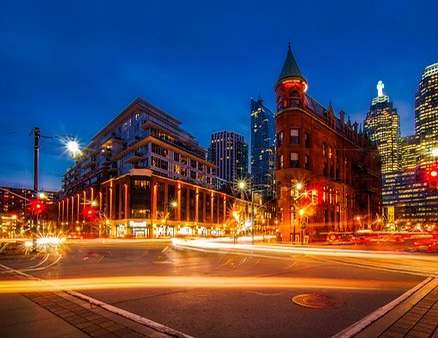Ontario’s attempt to aesthetically erase the memory of Henry Dundas and his legacy of slavery
 If one were to ask a few Torontonians, what is the centre of the city or the very heart of its downtown core, most would likely reply Dundas Square. It is the city’s version of Times Square in New York or Trafalgar Square in London.
If one were to ask a few Torontonians, what is the centre of the city or the very heart of its downtown core, most would likely reply Dundas Square. It is the city’s version of Times Square in New York or Trafalgar Square in London.
This soon to be infamous street was originally named after Henry Dundas, the 18th- century politician who delayed the British Empire’s abolition of the transatlantic slave trade by over 15 years and enabled the trafficking of over 600,000 Africans.
Toronto and Ontario’s Dundas Street has existed since the early 1800s. Today it is a central hub for selfie-obsessed tourists, downtown entertainers, and dancers wishing to shoot a viral video.
Notwithstanding the buzz, The City Council has just voted to rename Dundas Street and other civic assets with the Dundas name. This is a grand effort to promote inclusion and reconciliation with marginalized communities.
The goal of this decision is to reinforce Toronto’s commitment to confronting anti-Black racism, advancing truth, reconciliation, and justice, as well as building a more inclusive and equitable space for all.
It is important to note the broader context of a cultural paradigm shift. Canada Day this year was marked with a discernible air of sobriety and grief. This was due to the public outcry over the discovery of the remains of hundreds of children in unmarked graves at former indigenous schools.
In Winnipeg, peaceful protesters toppled statues of Queen Victoria and Queen Elizabeth II which they saw as physical symbols of empire, colonialism and slavery.
For The City Council, addressing the historical legacy of Dundas Street is essential, and goes along with the implementation of other Council-approved strategies to combat racism and discrimination.
Mayor John Tory and Deputy Mayor Tory stated that “renaming Dundas Street is the right decision to move forward together towards a more inclusive and equitable Toronto. Renaming Dundas does not erase the past but is an important step forward in how we will shape our future.”

The renaming process will be led by a Community Advisory Committee made up of Black and Indigenous leaders and representatives from the diverse communities living and working along Dundas Street.
Steps like these are to be commended. Whether or not the bulk of the city’s residents were aware of Dundas’ historical roots, it is important to address historical underpinnings that affect inhabitants of a city.
Nonetheless, some critics argue that while aesthetic gestures are nice, they should also be coupled with systemic attempts to correct historical wrongs. That way the unprecedented renaming of Dundas street would go beyond symbolism.
References:







